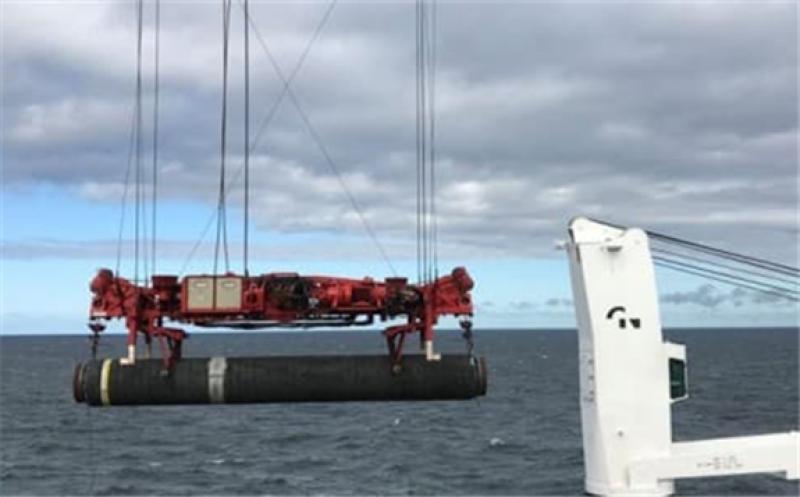The prolonged Nord Stream-2 saga has managed the unmanageable – industry watchers are becoming numb to the ever-changing prospects of the project and are becoming less and less likely to put forward any estimates as to when the pipeline might be eventually completed.

Yet at the same time, the geopolitical factors surrounding the project continue to vex European governments. Although the Nord Stream project company was granted October 01 the last missing piece of the permitting puzzle, Denmark’s agreement to its pipe-laying activities on the Danish continental shelf, the subsea works are still where they were a year ago. The ambiguous prospects of Nord Stream 2 have a rather daunting effect on Gazprom’s traditionally hyper ambitious plans, forcing the Russian gas giant to be cautious, discreet and unassuming. As of end-October 2020, Gazprom has still not started pipelaying works on Nord Stream 2, despite having all required permits and agreements. The past 2-3 weeks, however, were much more eventful than the last 6 months as Akademik Cherskiy, a derrick pipelaying vessel assumed to be the one to finish Nord Stream 2, sailed off to Russian waters to test its recently equipped positioning systems. If the testing goes as planned, the vessel is presumed to return to the German port of Mukran by early November and from there onwards nothing is preventing Gazprom from starting the actual pipe-laying. As both the ports of Kaliningrad and Mukran have some anchor handling tugs floating around, should the pipelaying vessels need constant support in anchoring and de-anchoring, they will be available without the need to wait.
Amidst the above mentioned activity, the United States have once again taken to unilateral sanctions under the Protecting Europe’s Energy Security Act (PEESA), this time levying sanctions that engage in pipe-laying at least 100 feet below sea level or facilitate “upgrades or installation of equipment for pipe-laying vessel engaged in the construction of Nord Stream-2. This move has a direct aim – to counteract the recent flurry of retrofitting activity that has been taking place in the Russian port of Kaliningrad, including the testing of position-mooring equipment on Akademik Cherskiy in the Russian waters of the Baltic Sea. Although enhancing the sanctions certainly plays a big role in warding off any German participation in the completion of Nord Stream-2, it seems that Russia would be able to slowly but surely finalize the pipe-laying, especially considering the completely untraceable ownership structure of the main pipelaying vessels.
Cognizant of German objections and EU threats of responding to extraterritorial sanctions, perhaps the White House’s current objective is no longer to stop the pipeline but to temporarily derail it. One of the main internal ramifications of the Nord Stream-2 delays has been the stalling of gas infrastructure construction on Russian territory itself. Nord Stream-2 will be primarily fed by increasing output volumes from the Yamal Peninsula and not the legacy Nadym-Pur-Taz fields, for this Gazprom has planned the construction of two key pipeline conduits, the 45 BCm per year Ukhta-Torzhok 2 and the 55 BCm per year capacity Gryazovets-Slavyanskaya feeder lines. Both pipelines should be already commissioned in 2019, however the general delays have compelled Gazprom to wait with their bringing onstream.
Industry watchers might have noticed that the traditional Gazprom way of conducting business, brimming with ideas both viable and completely unrealizable, has disappeared in the past years. Partially it might be a result of CEO Alexey Miller rendering the company’s structure leaner and more market-oriented, using the post-Crimean sanctions era to get rid of all top officials who were “allotted” their high-paying posts for past political achievements. Yet even more than Miller’s lean strategy, Gazprom’s current modesty stems from a deep uncertainty that surrounds the Russian pipeline monopoly’s prospects in Europe, still its major market outlet. European authorities have so far avoided penalizing Gazprom supplies to Europe, only participating in financial sanctions that can be circumvented by the Russian company, however, counteracting to US willingness to stop Nord Stream-2 has proved to be beyond their political powers.
As a consequence, the only future direction that has seen any tangible development in the past 2 years is China. Despite being confronted with China’s notoriously hard-style negotiating strategy (the Power of Siberia-1 contract took 10 years to agree on), Gazprom is pushing forward with Power of Siberia-2 (previously known as the Altai pipeline, assumed to have a 50 BCm per year capacity) that would see natural gas from West Siberia move to Eastern China via Mongolia, all the while considering an extension of the existing Sakhalin-Vladivostok gas pipeline to China. The latter project seems to be one of Gazprom’s priorities recently as the suggested annual throughput of the expansion was recently hiked from 7 BCm per year to 22 BCm per year. The exact source for this gas is still to be specified, with the 815 BCm Yuzhno-Kirinskoye field emerging as the most likely contender (albeit an already US-sanctioned one).
This article is reproduced at oilprice.com